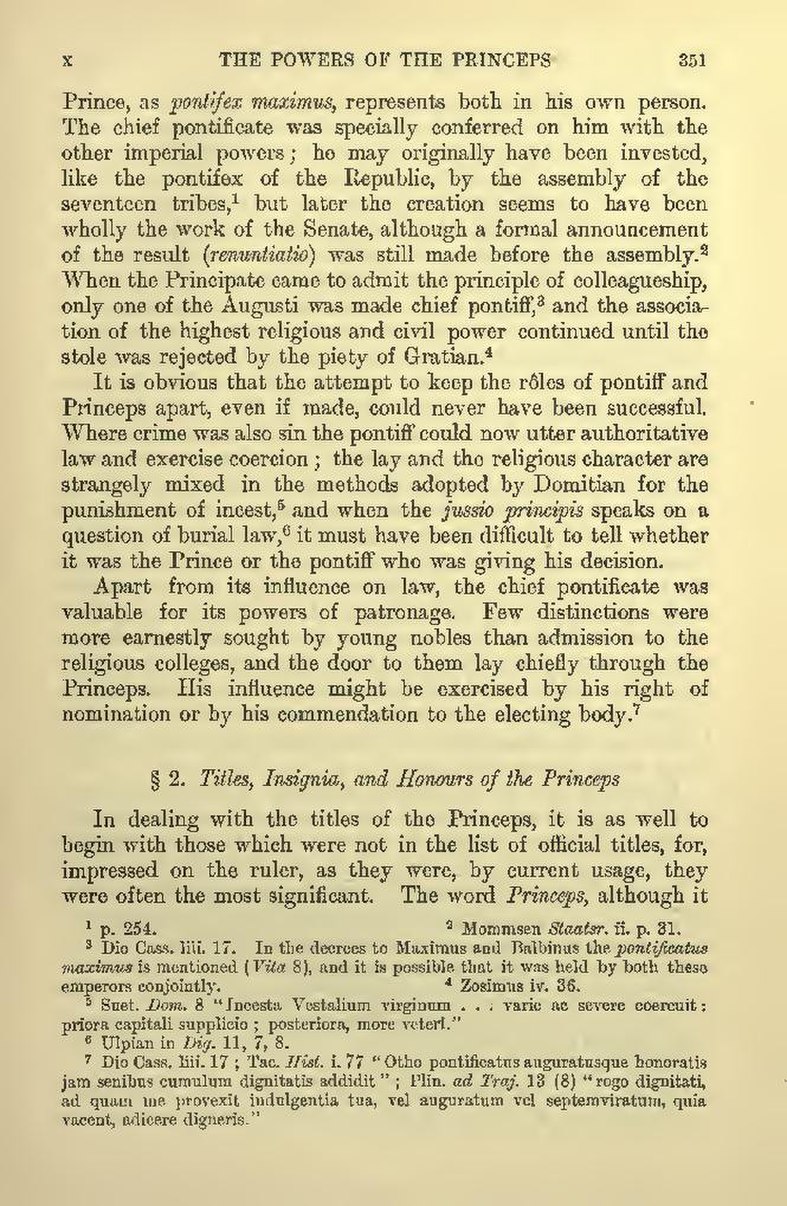Prince, as pontifex maximus, represents both in his own person. The chief pontificate was specially conferred on him with the other imperial powers; he may originally have been invested, like the pontifex of the Republic, by the assembly of the seventeen tribes,[1] but later the creation seems to have been wholly the work of the Senate, although a formal announcement of the result (renuntiatio) was still made before the assembly.[2] When the Principate came to admit the principle of colleagueship, only one of the Augusti was made chief pontiff,[3] and the association of the highest religious and civil power continued until the stole was rejected by the piety of Gratian.[4] It is obvious that the attempt to keep the rôles of pontiff and Princeps apart, even if made, could never have been successful. Where crime was also sin the pontiff could now utter authoritative law and exercise coercion; the lay and the religious character are strangely mixed in the methods adopted by Domitian for the punishment of incest,[5] and when the jussio principis speaks on a question of burial law,[6] it must have been difficult to tell whether it was the Prince or the pontiff who was giving his decision. Apart from its influence on law, the chief pontificate was valuable for its powers of patronage. Few distinctions were more earnestly sought by young nobles than admission to the religious colleges, and the door to them lay chiefly through the Princeps. His influence might be exercised by his right of nomination or by his commendation to the electing body.[7] § 2. Titles, Insignia, and Honours of the Princeps
In dealing with the titles of the Princeps, it is as well to begin with those which were not in the list of official titles, for, impressed on the ruler, as they were, by current usage, they were often the most significant. The word Princeps, although it
- ↑ p. 254.
- ↑ Mommsen Staatsr. ii. p. 31.
- ↑ Dio Cass, liii. 17. In the decrees to Maximus and Balbinus the pontificatus maximus is mentioned (Vita 8), and it is possible that it was held by both these emperors conjointly.
- ↑ Zosimus iv. 36.
- ↑ Suet. Dom. 8 "Incesta Vestalium virginum . . . varie ac severe coercuit: priora capitali supplicio; posteriora, more veteri."
- ↑ Ulpian in Dig. 11, 7, 8.
- ↑ Dio Cass. liii. 17; Tac. Hist. i. 77 "Otho pontificatus auguratusque honoratis jam senibus cumulum dignitatis addidit"; Plin. ad Traj. 13 (8) "rogo dignitati, ad quam me provexit indulgentia tua, vel auguratum vel septemviratum, quia vacent, adicere digneris."
